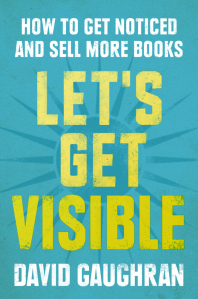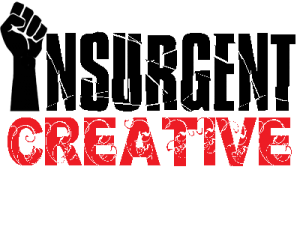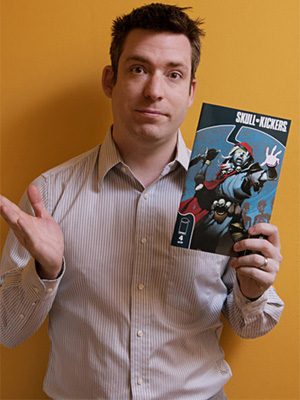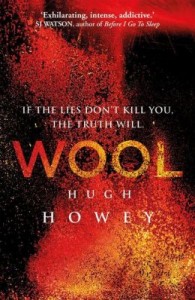 First things first: Let’s Get Visible: How to Get Noticed And Sell More Books is not something you should jump in and read first thing. It’s an advanced guide, a companion volume to David Gaughran’s 2011 release, Let’s Get Digital: How To Self-Publish, And Why You Should. If you haven’t read Digital, you absolutely should — it is an absolutely critical tome for anybody looking to do digital publishing, whether running a small publishing operation, or putting our your own stuff — and it’s on sale right now for 99 cents as a tie-in promotion to this release, so you should go grab it immediately. I’ll wait.
First things first: Let’s Get Visible: How to Get Noticed And Sell More Books is not something you should jump in and read first thing. It’s an advanced guide, a companion volume to David Gaughran’s 2011 release, Let’s Get Digital: How To Self-Publish, And Why You Should. If you haven’t read Digital, you absolutely should — it is an absolutely critical tome for anybody looking to do digital publishing, whether running a small publishing operation, or putting our your own stuff — and it’s on sale right now for 99 cents as a tie-in promotion to this release, so you should go grab it immediately. I’ll wait.
Let’s Get Visible is the sequel — a more advanced guide which tackles the most critical issue facing independently-published content: How to get more people to see your work, to discover it among the myriad other options available, and hopefully, how to get them to buy it. It assumes that you already know the nuts and bolts of how of digital publishing — producing professional-quality material, well-designed, attractive, and making it available for sale. The focus of this volume is on increasing the visibility (and therefore the sales) of your books once they’re ready to go.
 There are, as a rough estimate, eleventy-bajillion “CRACK AMAZON’S SECRETS AND SELL TONS!!!” self-publishing cash-ins available for purchase. This is not one of them. This is a sober, honest breakdown of tactics and strategies for increasing the visibility of your book, whether it’s been previously published, or if you’re launching from scratch. It concentrates largely on methods to improve your books visibility on Amazon — which makes sense, since Amazon represents an overwhelmingly large percentage of the digital market. Your best efforts focused there will have the most direct impact on your overall sales. Gaughran also covers sites like Barnes & Noble, Apple, Kobo and Smashwords, but spends most of the time giving you information that will do you the most good.
There are, as a rough estimate, eleventy-bajillion “CRACK AMAZON’S SECRETS AND SELL TONS!!!” self-publishing cash-ins available for purchase. This is not one of them. This is a sober, honest breakdown of tactics and strategies for increasing the visibility of your book, whether it’s been previously published, or if you’re launching from scratch. It concentrates largely on methods to improve your books visibility on Amazon — which makes sense, since Amazon represents an overwhelmingly large percentage of the digital market. Your best efforts focused there will have the most direct impact on your overall sales. Gaughran also covers sites like Barnes & Noble, Apple, Kobo and Smashwords, but spends most of the time giving you information that will do you the most good.
Gaughran presents the current best guess as to workings of Amazon’s algorithms for its Recommendation Engine, it’s sales rankings, it’s top lists. He sources this information with links to blogs and articles where the detective work has been done by himself and others, with the up-front caveat that Amazon does change these formulae, so the information that is presented in this book is only current as of May 2013. By providing the links, however, he insures that the reader can keep up to date on any further developments. He is honest about the fact that since the algorithms are proprietary, nobody but Amazon knows for sure how they work — but he clearly spells out the evidence for the methods he presents. This isn’t get-rich-quick one-true-wayism, but rather a evidentiary examination of logical conclusions, with the caveat that the information will change — but that those changes will be easier to adapt to once you have a basic grasp of how the process has worked historically. This is a breath of fresh air for indie publishing, which too often draws cult-of-personality gurus, heavy with the stink of hucksterism.
From examination of how Amazon recommends books to customers, Gaughran presents the logical methods for presenting your work so as best to take advantage of those suppositions, some of which is common sense, but much of which presents a new way to think about things (for example, a counter-intuitive method of launching a book which goes against the instincts I have developed over 20 years of working in publishing — but which makes perfect sense given the evidence provided about how the various recommendations and lists work).
I could go on — but honestly, you are far better served by reading the book than in reading a recommendation for it. Make no mistake, that is what I am unreservedly offering here: a recommendation, in the strongest possible terms. Despite my experience, this book gave me valuable advice, gave me new information that I hadn’t considered, and an entirely new way of thinking about promotion. Both books (linked below) should be an essential part of an Insurgent Creative’s tool kit — and I’d recommend adding David Gaughran’s blog to your regular reading list as well.






